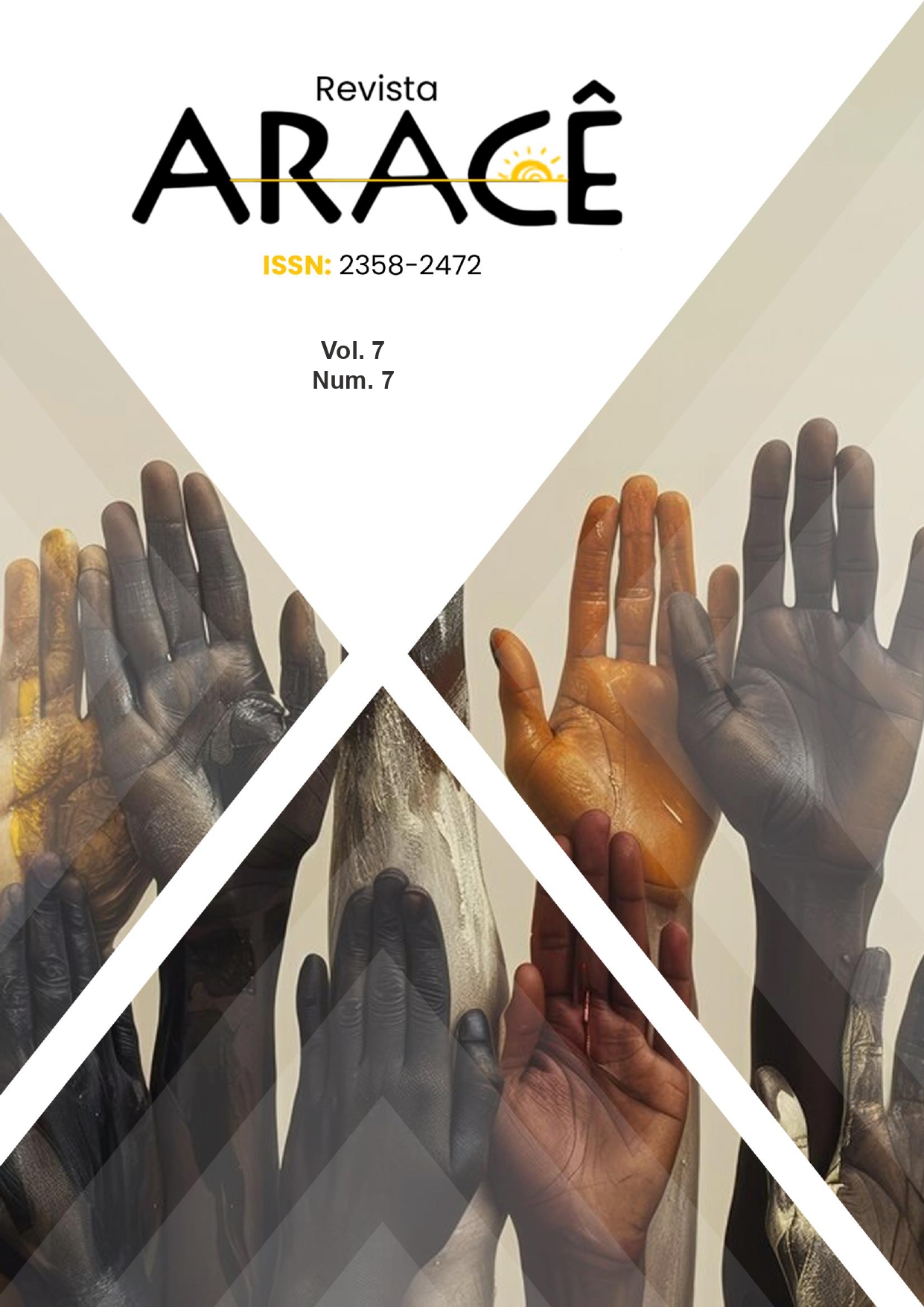A IMPORTÂNCIA DO RITUAL PẼMP: FORMAÇÃO DO SUJEITO INDÍGENA GAVIÃO NA TERRA INDÍGENA MÃE MARIA
DOI:
https://doi.org/10.56238/arev7n7-065Palavras-chave:
Cultura indígena, Gavião, Ritual de passagem, Identidade, Educação tradicionalResumo
Este artigo tem como objetivo analisar a importância do ritual pẽmp[1] na formação do sujeito indígena do povo Gavião da T.I Mãe Maria[2], localizada no sudeste do Pará. O pẽmp, tradicionalmente realizado com jovens entre 12 e 20 anos, é um ritual de passagem que envolve práticas culturais, sociais e espirituais, sendo essencial na construção da identidade individual e coletiva do povo Gavião. A pesquisa adota uma abordagem qualitativa, com base em revisão bibliográfica, análise documental e entrevistas semiestruturadas com lideranças indígenas e anciãos que vivenciaram o ritual. As entrevistas foram realizadas entre janeiro e julho de 2024 e foram fundamentais para compreender os impactos do pẽmp na formação dos jovens. Além disso, o estudo se ancora na experiência vivida do autor, indígena pertencente à comunidade pesquisada, o que proporciona uma perspectiva interna e legítima sobre o tema. Os resultados indicam que o pẽmp desempenha um papel central no fortalecimento da autonomia, do vínculo cosmológico, da coletividade e do respeito às tradições ancestrais. A ausência da realização contínua desse ritual pode comprometer a transmissão de saberes fundamentais à sobrevivência cultural do povo Gavião. Assim, o estudo reafirma a relevância do pẽmp como prática educativa e formativa que resiste às influências externas e reafirma a identidade étnica em contextos contemporâneos.





